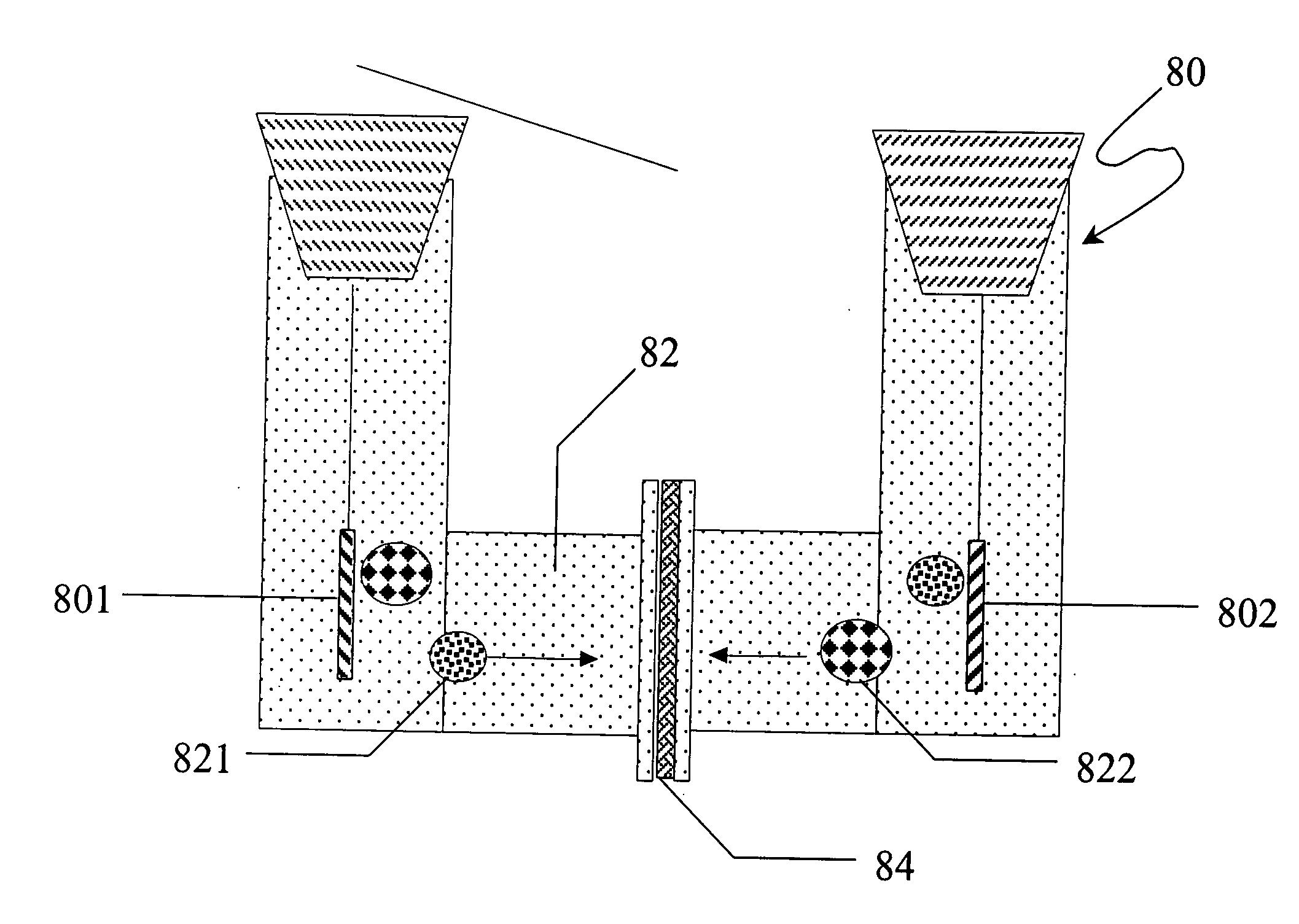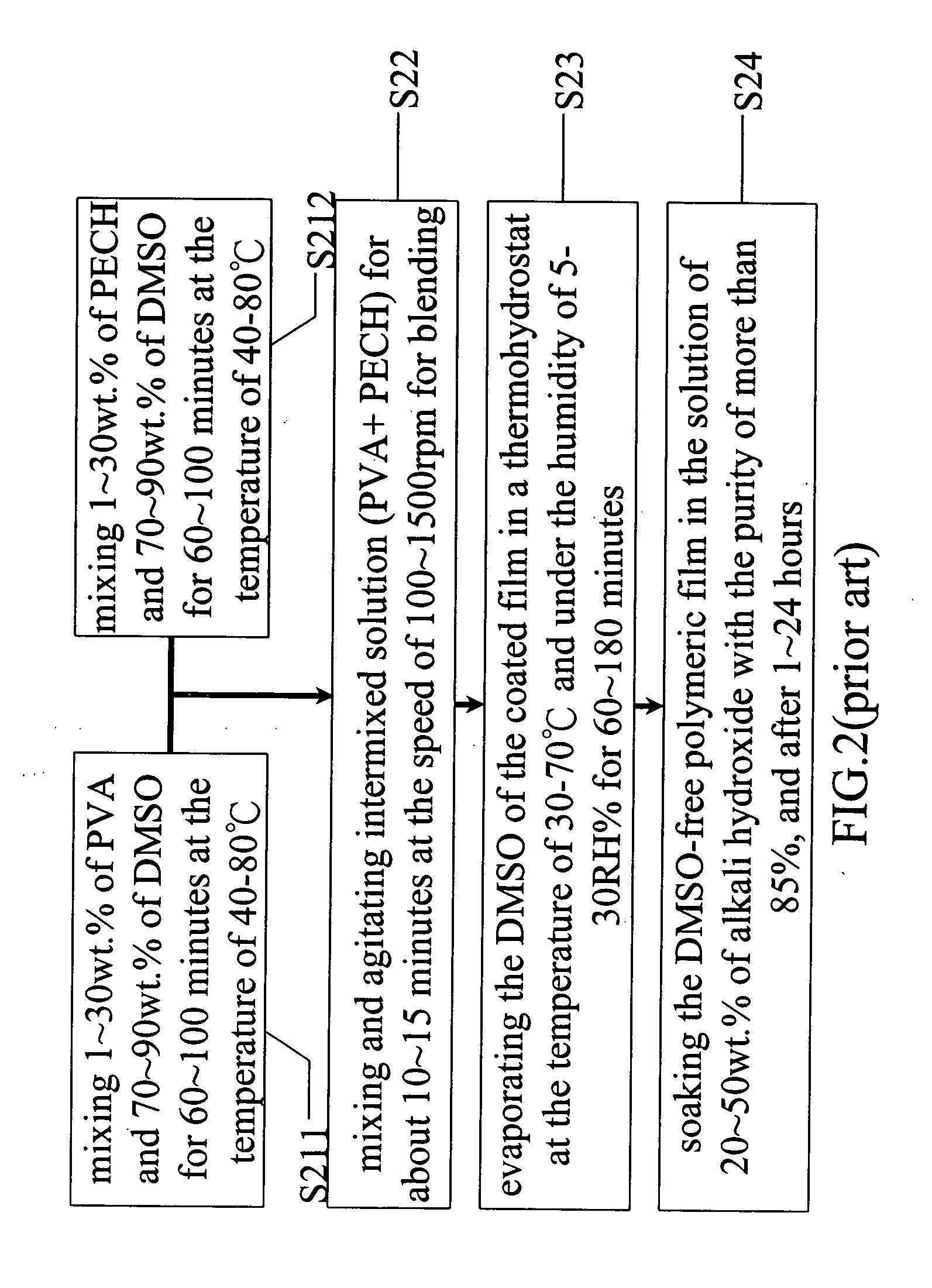Fabrication method of a basic polymer electrolyte film of blended polyvinyl alcohol and quaternary amine
a technology of polyvinyl alcohol and quaternary amine, which is applied in the manufacture of final products, chemical/physical processes, climate sustainability, etc., can solve the problems of reducing the ionic conductivity of solid-state polymeric films, affecting the stability of the electrolyte film, etc., and achieves the effect of superior compatibility with the solution
- Summary
- Abstract
- Description
- Claims
- Application Information
AI Technical Summary
Benefits of technology
Problems solved by technology
Method used
Image
Examples
Embodiment Construction
[0031] In the present invention, the product of the blending reaction of PVA and quaternary amine is used as the material of a polymer electrolyte film. Refer to FIG. 3 for the mechanism of the blending reaction between PVA and quaternary amine. The structure of PVA monomer is —(CH2—CH—OH)n—, and the structure of quaternary amine is formed via connecting four carbon-chain structures—R1, R2, R3 and R4—to a nitrogen atom, wherein those four carbon-chain structures R1, R2, R3 and R4 may be identical or different. In the blending reaction, 1 mole of PVA reacts with m mole of quaternary amine, wherein electropositive quaternary amine is attracted by the electronegative PVA. Besides, both PVA and quaternary amine have a lot of hydrogen bonds; therefore, after the blending reaction, the product is a polymer of high structural strength and high chemical stability. Further, owing to the addition of quaternary amine, the crystallinity of PVA is reduced, and the barrier to the ion mobility in ...
PUM
| Property | Measurement | Unit |
|---|---|---|
| Temperature | aaaaa | aaaaa |
| Temperature | aaaaa | aaaaa |
| Temperature | aaaaa | aaaaa |
Abstract
Description
Claims
Application Information
 Login to View More
Login to View More - R&D
- Intellectual Property
- Life Sciences
- Materials
- Tech Scout
- Unparalleled Data Quality
- Higher Quality Content
- 60% Fewer Hallucinations
Browse by: Latest US Patents, China's latest patents, Technical Efficacy Thesaurus, Application Domain, Technology Topic, Popular Technical Reports.
© 2025 PatSnap. All rights reserved.Legal|Privacy policy|Modern Slavery Act Transparency Statement|Sitemap|About US| Contact US: help@patsnap.com



